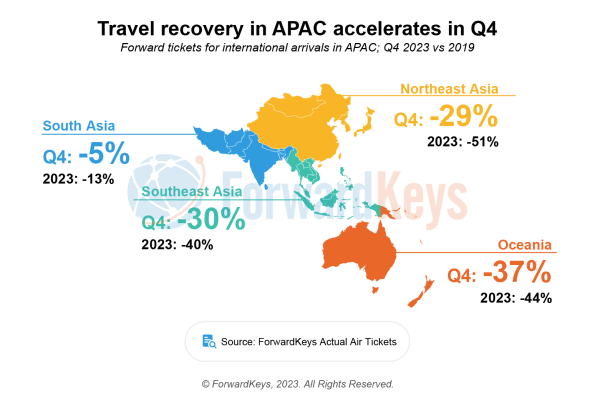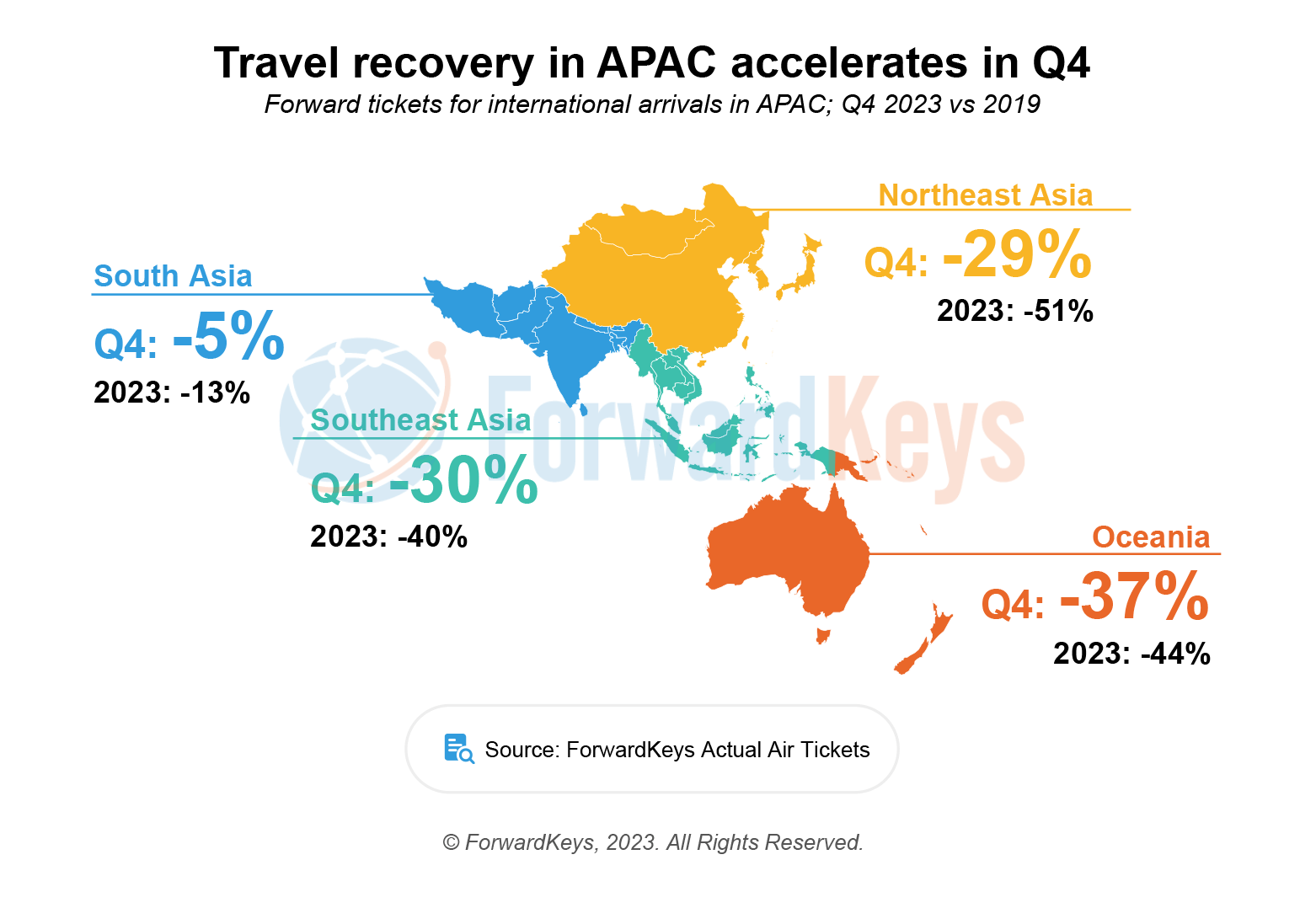SINGAPORE, 23 November 2023: Travel recovery to the Asia Pacific region was slow initially due to strict travel restrictions and pandemic-related concerns, according to a new report by ForwardKeys, partnering with the Pacific Asia Travel Association.
However, ForwardKeys says: “The tide is now turning, and international arrivals are making a robust comeback in the last quarter of 2023, getting closer to 2019 levels.”

The recovery of the travel industry is not happening uniformly across all countries. Some countries are faring better than others. South Asia is the most recovered sub-region, with a decline of only 5% in Q4. This fast recovery is supported by a robust restoration of international seat capacity, expected to exceed 2019’s levels by 4%
Among the top regional destinations, India is the most resilient, with only a 1% decline in tourist arrivals. As per the forward tickets, it is expected to reach 2019 levels of tourist arrivals in Q4 2023.
Japan (-11%) is also expected to be near pre-pandemic levels. The country managed to attract the interest of travellers from both regional markets (particularly South Korea, Singapore, and Australia) and long-haul markets (particularly the USA (United States of America), Canada, Germany, and France). The depreciation of the Japanese Yen makes the destination more affordable for a broader variety of travellers.
It is important to remember that since 2019, the landscape has evolved, influenced by geopolitical events, technological advancements, and a growing focus on sustainability. Therefore, destinations and travel professionals in the region need to consider these changes when preparing for 2024.
Despite the overall positive trend, air connectivity remains a significant challenge for the Asia Pacific travel industry. The pandemic led to reduced flight frequencies and higher airfares, which still affect the region today. Travel to and within the region remains more expensive and time-consuming than before, hindering the region’s full recovery. For example, the sub-region of Oceania (-37%) is still facing challenges in fully recovering from the impact of the pandemic. The region’s strong reliance on air travel, high airfare costs, and the slow recovery of the major markets (primarily China) have complicated the recovery of major destinations like Australia and New Zealand. As a result, many travel operators have shifted their focus to the domestic markets, resulting in more resilience. However, smaller destinations like Fiji, French Polynesia, or Samoa stand out as sub-regional success stories.
Despite these challenges, the Asia Pacific region possesses key assets that will propel its travel recovery forward over the coming months. These include the steady return of Chinese travellers, the growth of the Indian outbound and inbound markets, and the relentless efforts of Destination Marketing Organisations throughout the region to fuel travel demand.
APAC cities such as Fukuoka, Nha Trang and Nadi are all showing international arrival figures this Q4 above pre-pandemic level, up by 55%, 17% and 11% versus the same period in 2019. There is a sense of hope in the air.
You can register to attend the ForwardKeys and PATA online seminar 28 November 28 to learn more: https://www.pata.org/calendar/pata-x-forwardkeys-charting-the-course-for-2024-unveiling-apac-travel-trends
All registered attendees will receive a complimentary copy of the detailed report by ForwardKeys.
(Source: ForwardKeys)







